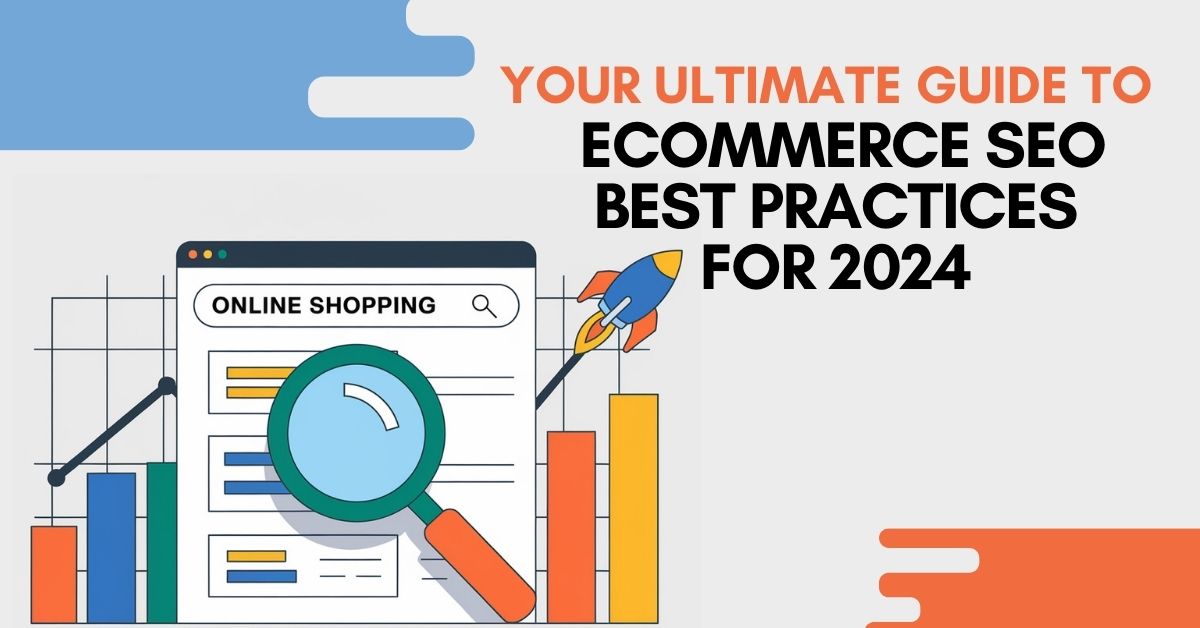Your Ultimate Guide to eCommerce SEO Best Practices for 2024
In the competitive world of online retail, mastering eCommerce SEO best practices is crucial for standing out. This guide will walk you through strategies to enhance your store’s visibility and drive sales.
Understanding Your Audience and Keyword Research
To effectively implement eCommerce SEO best practices, understanding your audience and performing thorough keyword research is crucial. Knowing your audience allows you to tailor your content to their needs and preferences, increasing engagement and conversion rates. Here’s how you can get started:
- Identify Your Target Audience: Create buyer personas to understand your customer’s demographics, interests, and search behaviors.
- Use Keyword Research Tools: Tools like Google Keyword Planner, Ahrefs, and SEMrush can help identify high-traffic keywords relevant to your niche.
- Analyze Competitors: Analyze the keywords your competitors rank for and identify gaps you can fill.
- Long-tail Keywords: Focus on long-tail keywords that reflect specific queries your potential customers might use.
Effective keyword research lays the foundation for a successful eCommerce SEO strategy by ensuring that your store is visible to the right audience.
Mastering Technical SEO for Your eCommerce Site
Technical SEO forms the backbone of eCommerce SEO best practices. It ensures that search engines can easily crawl and index your site, leading to better rankings. Key areas to focus on include:
- Site Speed: Use tools like GTmetrix to assess and improve your site’s loading times, which is crucial for retaining visitors and improving rankings.
- Mobile Optimization: Ensure your site is mobile-friendly. Use Google’s Mobile-Friendly Test tool to verify responsiveness across devices.
- Structured Data: Implement structured data to help search engines better understand your content and enhance search visibility through rich snippets.
- Canonical Tags: Use these tags to prevent duplicate content issues by indicating the original version of your content.
- Optimizing URLs: Keep URLs short, descriptive, and keyword-rich to improve SEO and user experience.
By optimizing these technical aspects, you make it easier for search engines to understand your site, giving your eCommerce store a better chance of ranking higher.
Optimizing On-Page Elements for Better SEO
On-page SEO is pivotal for ensuring that each product page on your eCommerce site targets relevant keywords and provides an excellent user experience. Consider these best practices:
- Product Titles and Descriptions: Use unique, keyword-optimized titles and descriptions that accurately represent each product.
- H1 Tags: Ensure each page has a unique H1 tag that includes relevant keywords.
- Image Alt Texts: Optimize image alt texts with relevant keywords to enhance visibility in image search.
- Category Pages: Extend SEO efforts to category pages by using rich, descriptive content that explains what the category encompasses.
For instance, a detailed case study on successful eCommerce on-page SEO might include how subtle changes in product descriptions and optimized images led to increased search visibility and conversions.
Effective Content Strategies to Boost SEO
Content remains king in the realm of eCommerce SEO best practices. This involves creating valuable content that resonates with your audience and earns their trust:
- Blogs, Guides, and Tutorials: Regularly publish content that educates and engages your audience, enhancing your site’s authority and relevance.
- Customer Reviews and UGC: Encourage user-generated content and customer reviews to add credibility and fresh content to your site.
- Unique Content: Avoid duplicate content scenarios by ensuring all on-page content is original and provides value.
High-quality content not only improves SEO but also establishes your brand’s authority in the eCommerce space.
Building a Strong Backlink Profile
Backlinks remain a critical component of eCommerce SEO best practices, acting as endorsements of your content’s quality and relevance. Here’s how to build a robust backlink profile:
- Earn Backlinks: Focus on creating high-quality, link-worthy content that other websites naturally want to link to.
- Outreach Strategies: Develop outreach strategies to connect with influencers and relevant websites for guest blogging opportunities.
- Internal Linking: Use internal links strategically to guide users and search engines to key pages on your site.
Effective link building will not only enhance your SEO but also increase your site’s authority and credibility.
Enhancing User Experience for Better Conversions
Improving user experience (UX) is essential for reducing bounce rates and enhancing conversions. Consider these best practices:
- Site Navigation: Ensure that your site’s navigation is intuitive and easy to follow.
- User-Friendly Design: Implement a clean, responsive design that enhances user interaction on all devices.
- Checkout Process: Simplify the checkout process to reduce cart abandonment rates.
By focusing on UX, you can provide a seamless shopping experience that encourages users to make purchases.
Measuring Your SEO Success: Tools and Metrics
Assessing the success of your eCommerce SEO strategy involves tracking key performance indicators (KPIs) and utilizing analytics tools to measure progress. Key metrics to consider include:
- Organic Traffic: Use Google Analytics to track the volume of non-paid visits to your site.
- Conversion Rates: Monitor the percentage of visitors completing desired actions such as making purchases or signing up for newsletters.
- Bounce Rates: Analyze the percentage of visitors who leave your site after viewing only one page to identify potential areas for improvement.
Regular audits and updates to your SEO strategy using these metrics will ensure continuous improvement and sustained success.
Ready to boost your eCommerce site’s SEO? Start implementing these best practices today and watch your store’s online presence grow!







